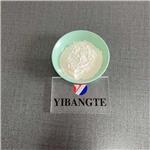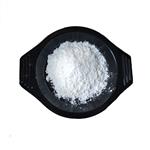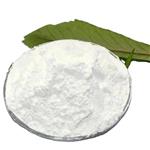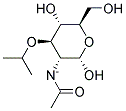- LYSOZYME
-

- $0.00 / 1kg
-
2023-09-06
- CAS:9001-63-2
- Min. Order: 1kg
- Purity: 99%
- Supply Ability: 500000kg
- LYSOZYME
-

- $0.00 / 25KG
-
2023-06-25
- CAS:9001-63-2
- Min. Order: 1KG
- Purity: 99%
- Supply Ability: 50000KG/month
- LYSOZYME
-

- $20.00 / 1kg
-
2023-03-25
- CAS:9001-63-2
- Min. Order: 1kg
- Purity: 99%
- Supply Ability: 5000 Ton
|
| | LYSOZYME Basic information |
| Product Name: | LYSOZYME | | Synonyms: | 1,4-N-Acetylmuramidase;1,4-β-N-Acetylmuramidase;Antalzyme;delvozyme;β-1,4-N-Acetylmuramidase;Aids072619;Aids-072619;Kvfercelartlkrlgmdgyrgislanwmclakwesgyntratnynagdrstdygifqinsrywcndgktpgavnachlscsallqdniadavacakrvvrdpqgirawvawrnrcqnrdvrqyvqgcgv | | CAS: | 9001-63-2 | | MF: | C11H20NO6- | | MW: | 262.2796 | | EINECS: | 232-620-4 | | Product Categories: | | | Mol File: | 9001-63-2.mol |  |
| | LYSOZYME Chemical Properties |
| storage temp. | -20°C | | solubility | Soluble in DMSO | | form | powder | | color | white | | Merck | 13,5660 | | Sequence | H-Arg-Val-Val-Arg-Asp-Pro-Gln-Gly-Ile-Arg-Ala-Trp-Val-Ala-Trp-Arg-Asn-Arg-OH | | Stability: | Stable. Incompatible with strong oxidizing agents. | | EPA Substance Registry System | Lysozyme (9001-63-2) |
| | LYSOZYME Usage And Synthesis |
| Chemical Properties | white to light beige solid | | Uses | Lysozyme from human neutrophils has been used in the checkerboard method for establishing a synergy between peptidomimetic 1 and immune effector molecules against E. coli. | | General Description | Native lysozyme from human neutrophils. Occurs in specific granules of human polymorphonuclear leukocytes and takes part in antibacterial activity of leukocytes. Hydrolyzes β1,4-linkages between N-acetylmuramic acid (2-acetamido-2-deoxy-3-O-[1′-carboxymethyl]-glucopyranose) residues in chitin. | | Biochem/physiol Actions | Lysozymes participates in the defense mechanism. It has the ability to stimulate catalysis by bringing steric stress in the substrates. | | Purification Methods | Lysozymes from human and bird sources are 129 amino acid enzymes that contain four disulfide bonds. Hen lysozyme was isolated in quantity from chicken egg white, crystallised, and its X-ray crystalline structure was determined [Phillips Proc Natl Acad Sci USA 57 484 1967]. Lysozyme occurs in many tissues of invertebrate and vertebrate animals. It is found in milk, blood serum and various secretions (saliva, nasal mucus and tears). It also occurs in some moulds and in the latex of certain plants. Lysozyme from human milk was studied in some detail and is very similar to the hen enzyme [Jolles & Jolles Helv Chim Acta 52 2671 1969 and 54 2668 1971]. Lysozyme is a glycosidase which dissolves various bacterial cell walls [particularly Gram-positive bacteria (which have surface lipoproteins) to give spheroblasts, and various Gram-negative bacteria in the presence of EDTA in hypotonic solutions, or non-ionic detergents]. Bacterial cell walls contain 1,4-�-N-acetylglycosaminyl oligosaccharides which are cleaved by the enzyme at the glycosidic C—O bond between the 4th and 5th sugar residues from the non-reducing end of the chain. The mechanism and kinetics of this hydrolysis have been studied extensively [cf Fersht Enzyme Structure and Mechanism, 2nd edn, W.H. Freeman & Co, Reading 1985, ISBN 0716716151]. Lysozyme was an extremely useful antibacterial in the pre-antibiotic era. It is a basic protein with 20-22 basic residues and only 3-4 acidic groups (see their isoelectric points); it forms soluble salts and is stable up to 55o.
It is purified from egg white by chromatography through Amberlite IRC50 at pH 7.18 in 0.2M phospate buffer followed by recrystallisation at pH 9.5 by adding NaCl to a concentration of 5%. Alternatively ~1L of homogenised egg white in the absence of air (from 3 dozen eggs) is added to a 10% suspension of Bentonite [1302-78-9] (150mL, a native hydrated aluminium silicate) in 1% aqueous KCl, and stirred vigorously enough to avoid excessive foaming for ~5minutes to give a smooth suspension. Separate the clay by centrifugation, wash it twice with 0.5M phosphate buffer (300mL each, pH 7.5) and three times with 5% aqueous pyridine (300mL each) while decanting from the clay and discarding inactive supernatants. From the combined washed clay, lysozyme is extracted out twice with 300mL of 5% aqueous pyridine (adjusted to pH5 with H2SO4 using a glass electrode). The combined extracts are dialysed against running tap H2O (at 12-15o) until free from pyridine odour and dialysed further for 24hours. Essentially pure amorphous lysozyme is obtained by lyophilising the dialysate below 25o. Crystalline isoelectric lysozyme is obtained from the amorphous powder by adding 0.5g of NaCl to a 5% aqueous solution of the enzyme (10mL), adjusting the pH to 9.5-10 (glass electrode) with aqueous NaOH and storing at 4o, whereby it crystallises out. Crystalline lysozyme carbonate is obtained from the amorphous powder by adding 0.5g of NaHCO3 to a 5% aqueous solution of the enzyme (10mL), giving a final pH of 8.0-8.5 (glass electrode) with aqueous NaOH and allowing to stand at room temperature, whereby the carbonate crystallises out. Crystalline lysozyme chloride is obtained from a 5% solution of amorphous powder by adjusting the pH to 4.5 with hydrochloric acid (glass electrode) followed by solid NaCl to 5%, and storing at 4o, whereby the chloride crystallises out in 4 to 5days. [Alderton & Fevold J Biol Chem 164 1 1946, Fevold & Alderton Biochemical Preparations I 67 1949.] Other salts include the L-ascorbate [119189-24-1], the lactate [72497-48-4], the phosphate [72497-47-3] and the 2,3-dihydroxypropyl dihydrogen phosphate [119189-23-0]. Dialysis and recrystallisation are simple and yield enzyme of high purity. Several forms of crystals are obtained depending on the pH of the crystallising solution. The activity of lysozyme is measured by the rate of decrease of turbidity (at 570nm ) as hydrolysis of acetone-dried cell walls of the Gram-positive bacterium Micrococcus lysodeikitus (as substrate) occurs on addition of the enzyme [Hirs Methods Enzymol I 124 1968]. At high concentrations or in the presence of albumin, lysozyme can be lyophilised or desalted without loss of activity. Freezing and thawing does not inactivate it, and Na+, Mg2+, Ag+, Ca2+, and Cu2+ exert an activating effect. It can be stored for several weeks at -20o without inactivation, and in the presence of 0.1% of bovine serum albumin it can be stored for months at -20o without inactivation. [Springer Handbook of Enzymes 2nd edn. Schonburg & Schonburg eds (A. Chang co-ed) Springer-Verlag Berlin, Heidelberg, Volume 1 2 2003 ISBN 3-540-00519-6. ] Agarose-bound lysozyme from hen egg (5,000-10,000 Units/g of solid), a lysozyme Biotin-caproyl solution (20,000 U/mg) and a carboxymethylated-maleylated lysozyme (Lysozyme-RCM, reduced form), and lysozyme of up to 100,000 U/mg protein are commercially available.
A T4 bacteriophage lysozyme (from phage grown on E.coli B1) [12585-29-4] was extracted and freed from DNA, cell debris, intact cells and acidic proteins by precipitation with Rivanol (6,9-diamino-2-ethoxyacridine dl-lactate). The filtrate was purified by concentration through an Amberlite IRC50 column which was thoroughly washed with 0.1M phosphate buffer pH 6.5 containing 10-3M MgSO4 and eluted with the phosphate buffer at pH 5.8 containing a 0 to 0.5M NaCl gradient. This was repeated twice, followed by gel filtration through Sephadex G-75 in pH 5.8 phosphate buffer and eluted with 0.5M NaCl. The eluate was dialysed against H2O and lyophilised to give a 1500-fold purification with 40% recovery. Like the hen lysozyme it is a basic protein but with 164 amino acid residues, and it is unstable >40o. [Tsugita et al. J Biol Chem 243 391 1968, Inouye et al. J Biol Chem 245 3439, 3479 1970, Matthews Biochim Biophys Acta 405 442 1975]. |
| | LYSOZYME Preparation Products And Raw materials |
|